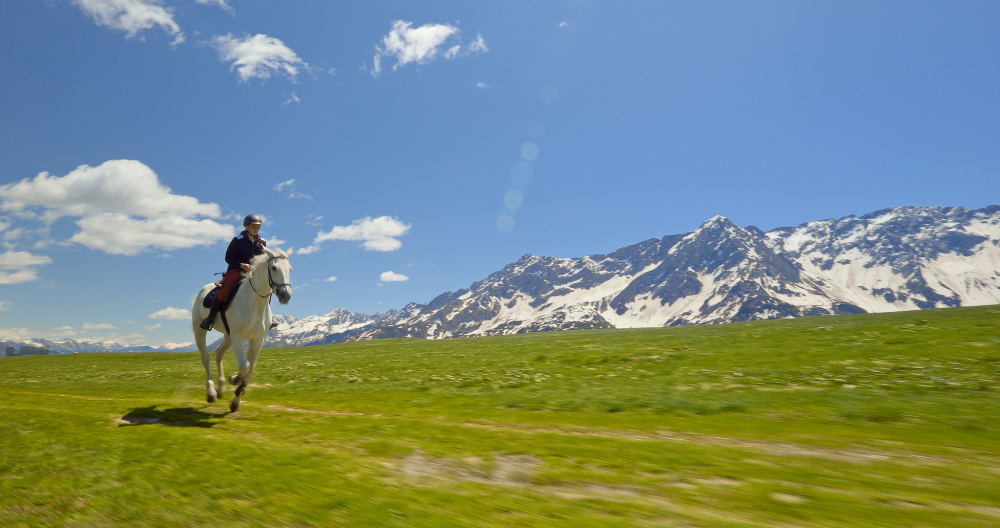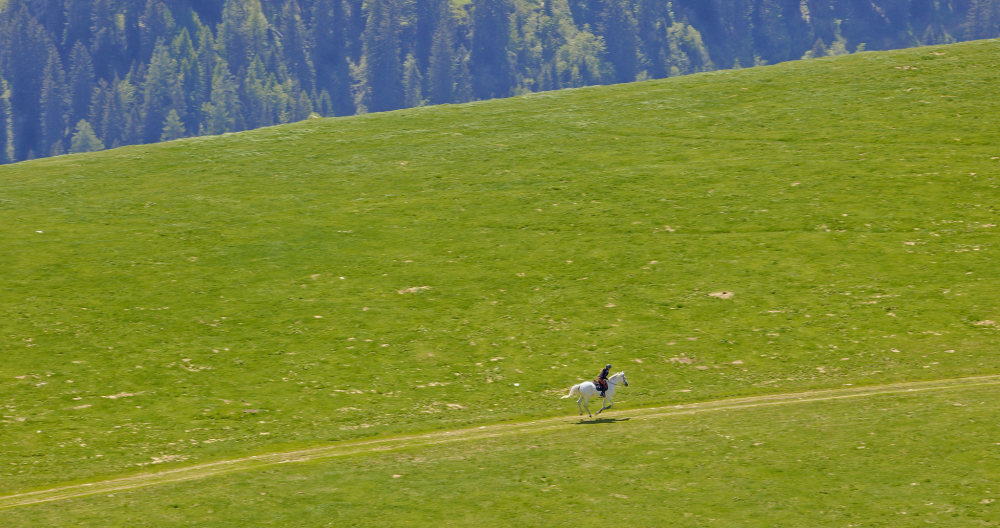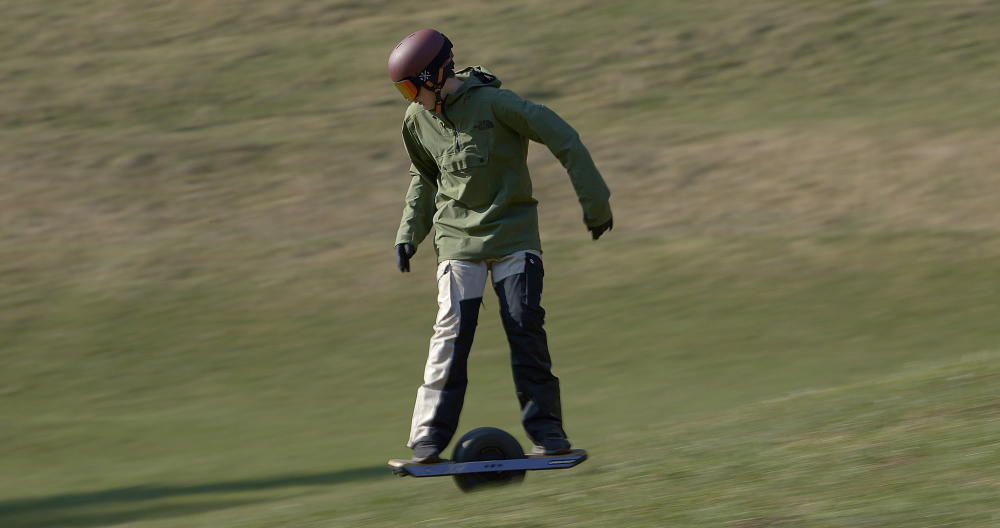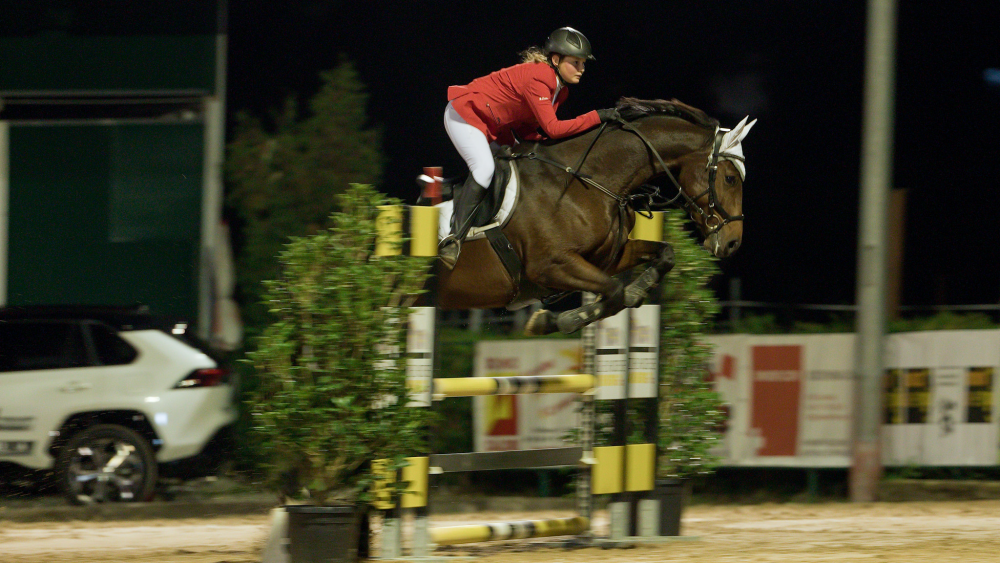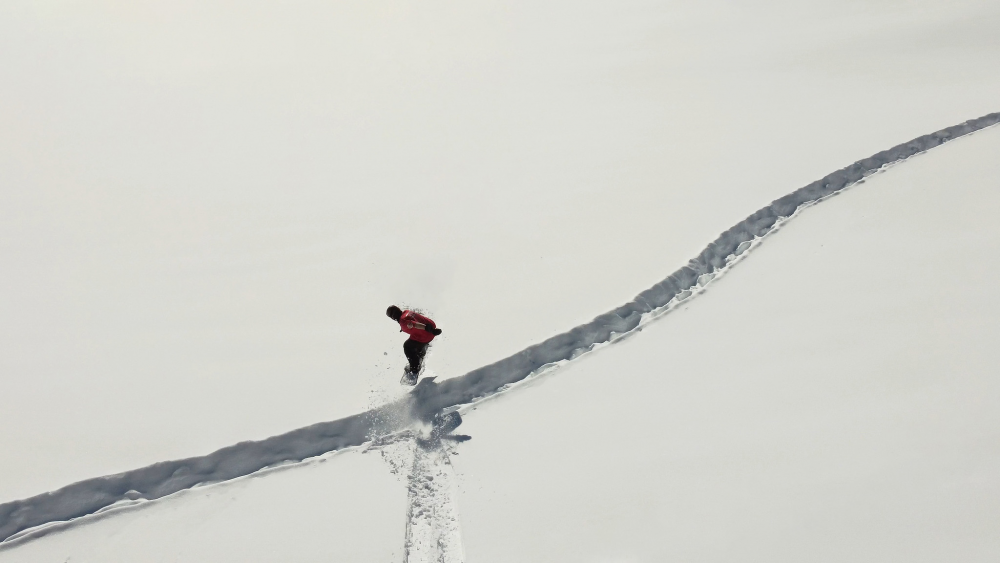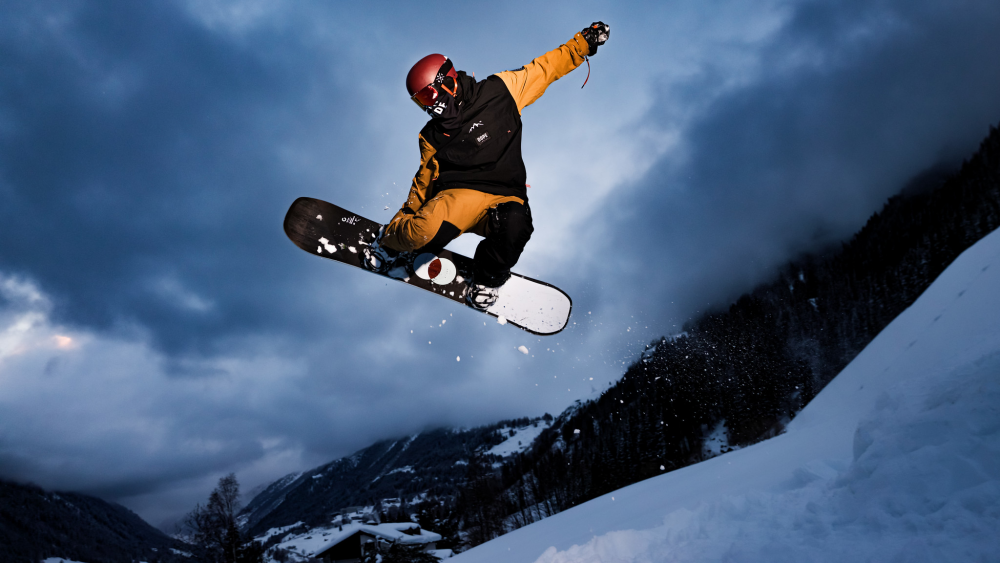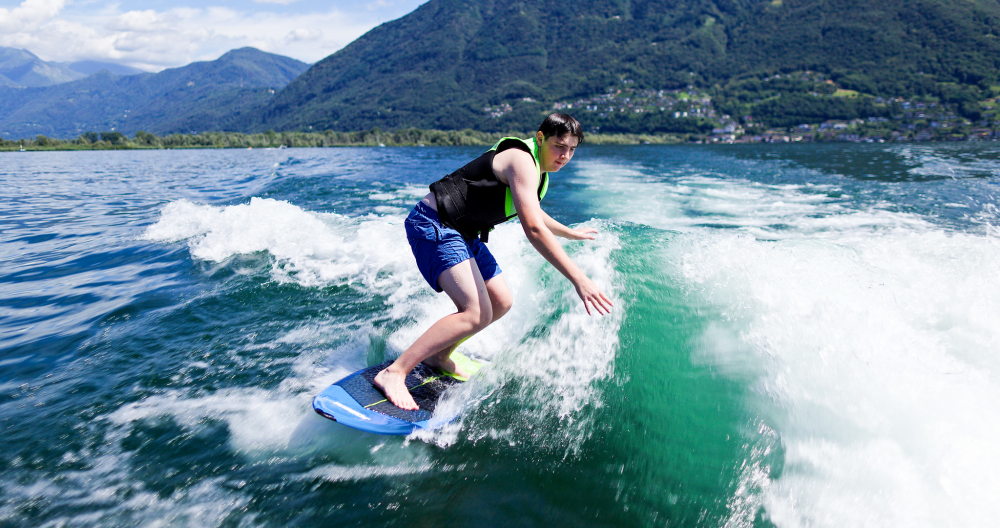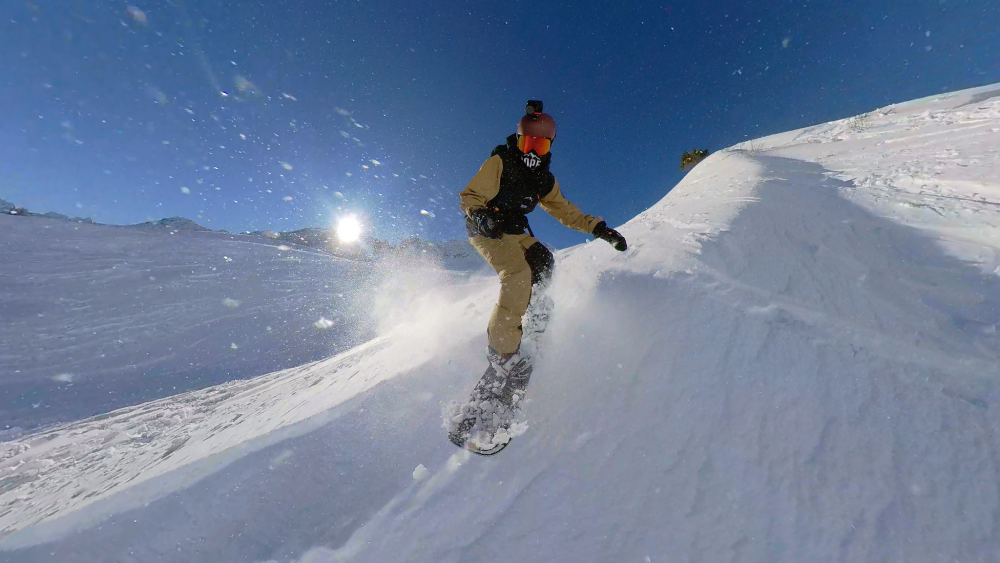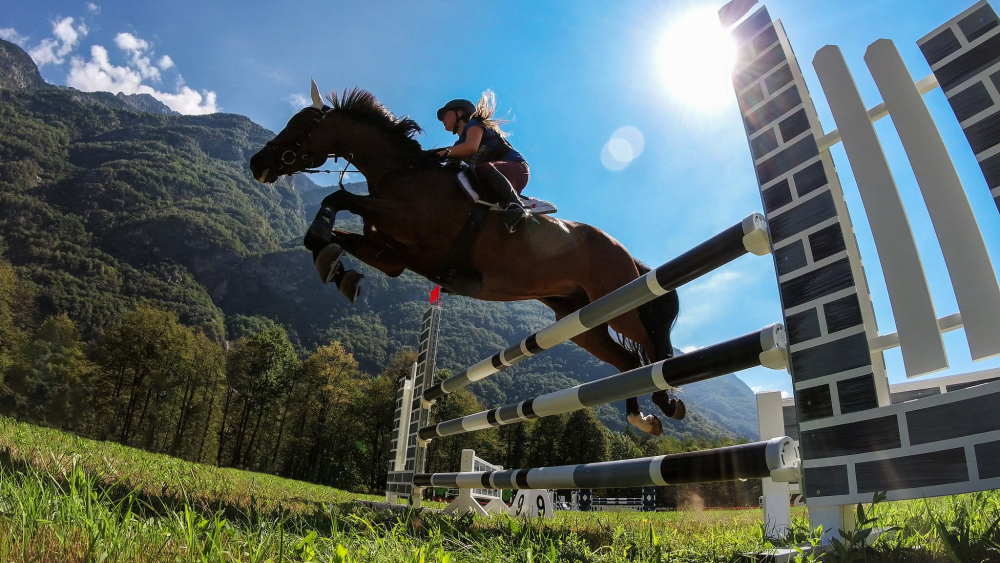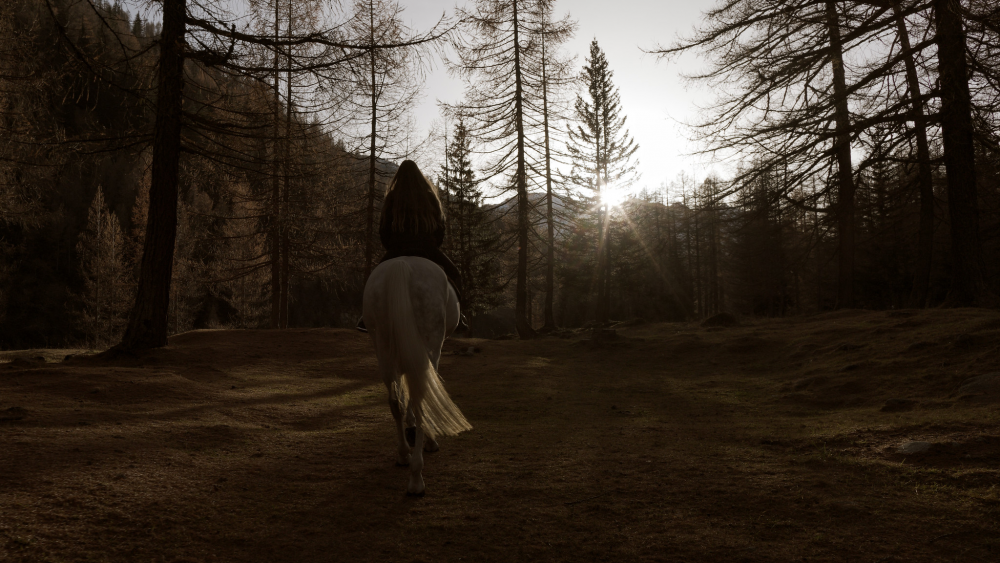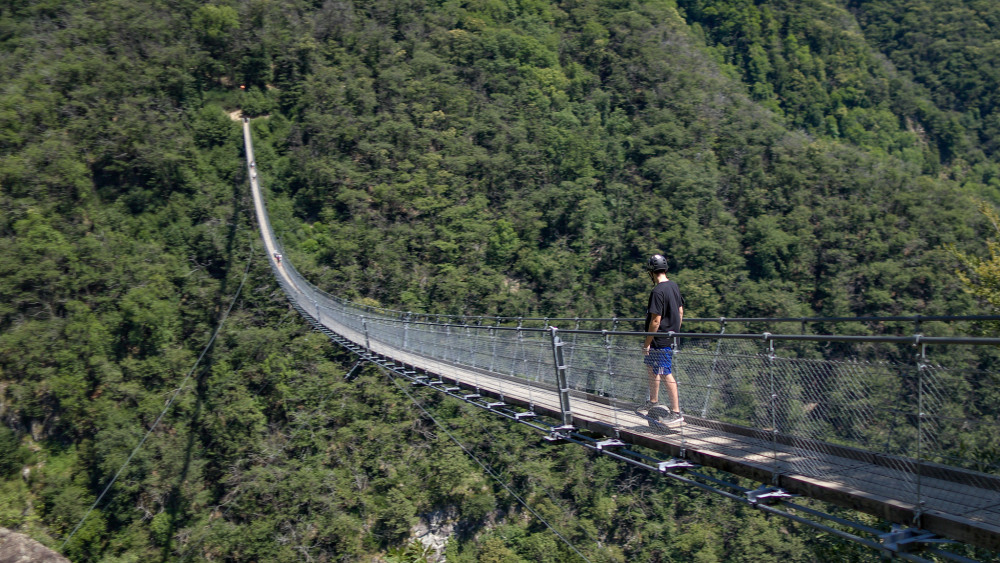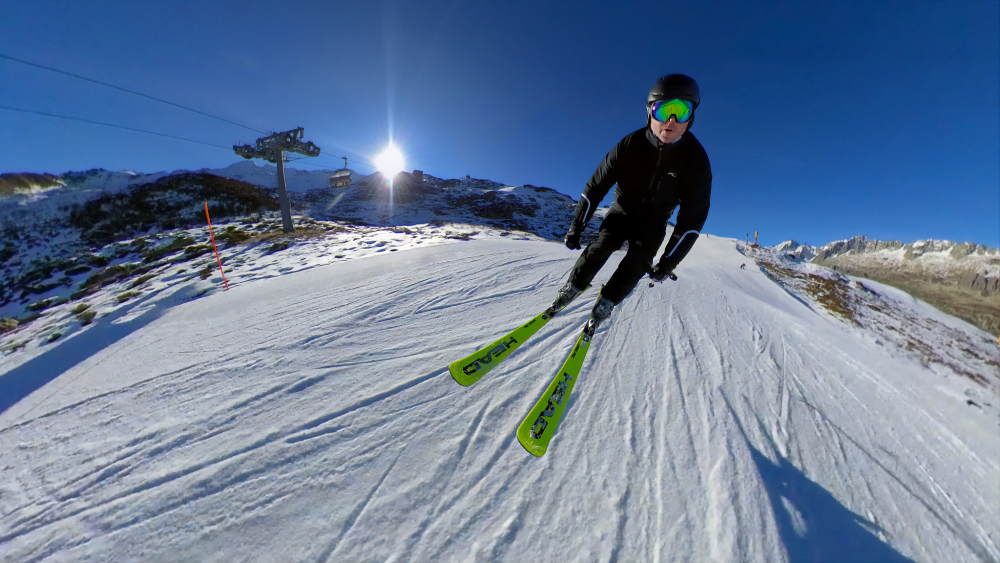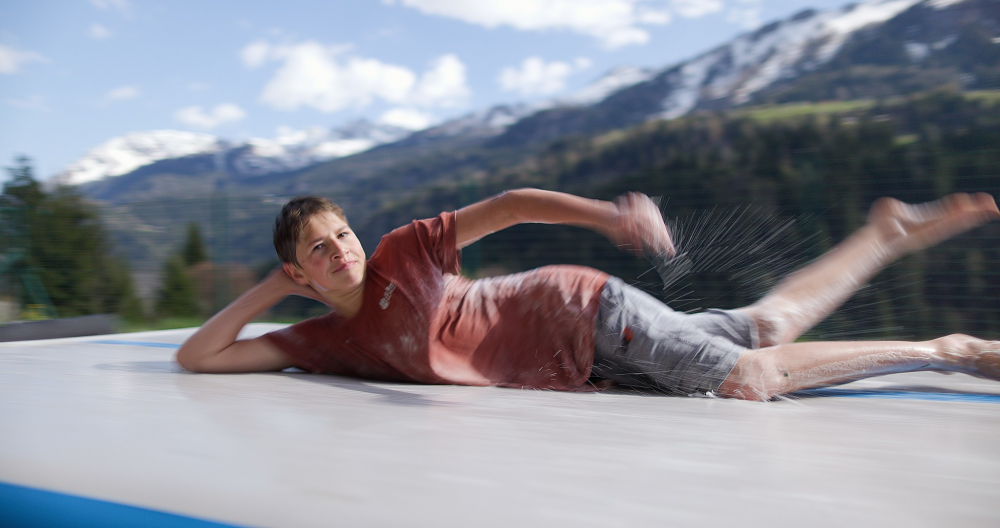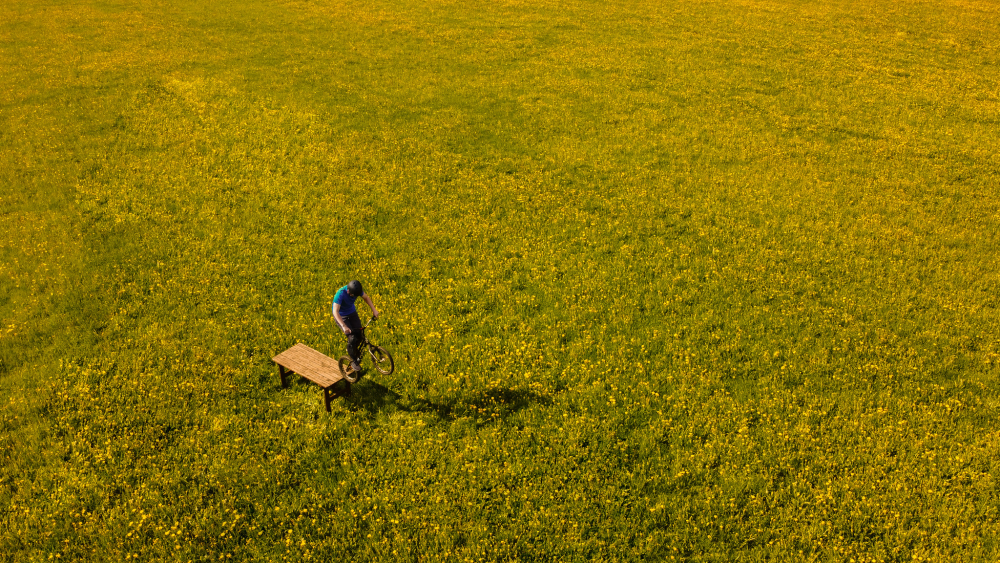Leaderboard
Popular Content
Showing content with the highest reputation on 02/01/2021 in all areas
-
Not sure what kind of revelation is this. Also not sure why the A1 bring something new here, actually on some canon body you get RAW so you have almost zero quality loss in taking still from video, I only wish there would be an open gate mode. The only thing that really change is the shutter speed but there sometime you get cool panned shoot if you are 1/50 vice versa for other scenes you could optimize more for the photo. New gen care less about the shutter speed as with games and gopro/phone video is all very high shutter speed stuff. Advantage of taking still from video is that you have more choice, sometime you capture moments that you would not have anticipated and pressed the shutter button and of course you have the whole video. Disadvantage is the workflow and shutter speed. I use a lot of remote camera, I trigger them with pocketwizard with an additional button mounted on the lens barrel so for hockey net remotes is great you don't want to record 60 min and scroll through to find the righ moment. But for sport that are more predictable like horse showjumping now I start the record maybe 20 sec before it reaches the obstacle and stop 20 sec after so I don't need to worry. In some key phases I have just turn on recoding before it starts. Sill from video at higher shutter speed: Mini 2 Canon R5 Insta360 1 inch Insta360 dual lens At 1/503 points
-
Autel EVO II 6K User Experience
Emanuel reacted to herein2020 for a topic
I recently picked up the Autel EVO II Pro 6K after having flown nothing but DJI drones since 2014. DJI's geofencing system kept becoming increasingly intrusive until 2wks ago when it suddenly thought my Mavic Pro was in a no fly zone and force landed it into the ocean. I had never even heard of Autel before this incident but after the incident I never want to own another DJI drone so after a lot of research I ended up buying the Autel EVO II 6K. THE BAD Most of the things on this list really aren't that bad, in fact if it weren't for DJI the Autel would far exceed my expectations. But after using DJI drones for so long its pretty apparent that Autel is about 2yrs behind DJI when it comes to their drone's maturity. Tablet Holder - This problem hit me before ever even taking off. There are no good tablet holder options. One option doesn't fold at all so it doesn't fit in any of the current rugged cases and the other option does not hold an iPad mini which I found out the hard way. I ended up with the GPC tablet holder but had to make some serious modifications to hold my iPad mini. The GPC mount also feels really flimsy where it attaches to the holder. The App - The app is nowhere near as good as DJI's app; the worst part about it is when you run it on a tablet it will not use the full screen so a lot of screen real estate is wasted as if they never thought people would want to use anything except their phones. Besides the scaling issue, it can be difficult to get the camera information quickly. In the DJI app you can always see things like frame rate, EV, resolution, etc. at a glance; with the Autel App you have to scroll around quite a bit to see all of your settings. Obstacle Avoidance - Obstacle avoidance feels like it is way too sensitive; a few times in the middle of the air with nothing around it it kicked in and slowed the drone. Also, when flying lower to the ground it was a real pain to deal with and seems overly cautious. I know it can be turned off but it would be nice if it had a lower sensitivity setting. Lens Flare - The 6K version of the camera suffers from really bad lens flare at certain angles to the sun. Of course all lenses have lens flare under certain conditions but the way the 6K camera handles it is not good. The flare was very uncomplimentary and pretty much made that particular angle in relation to the sun unusable for professional work. I never had that kind of lens flare problem with the DJI drones. No One Button Ludicrous Mode - With the DJI drones I use Sport Mode all the time to return quickly after completing a project or if there is a strong headwind or cross wind I use it to improve the handling of the drone for the return flight after filming. The Autel remote does not have a dedicated button for this and you could lose valuable seconds in a strong headwind scenario having to go into the app to enable ludicrous mode. Controller Battery Life - The remote's battery life so far seems worse than the Mavic's probably because of the display screen. This could still be because the batteries haven't fully broken in yet, but I noticed just updating the firmware made it drop by 20% and a single flight cost around 15% of the controller's battery life. Custom Color Profiles Don't Save - I plan on shooting exclusively in LOG and also like to turn sharpness down to -2 and contrast down to -1, but the app does not save the settings. So now I have to remember to set the settings each time and lose battery life while doing so. Company Size - Autel is tiny compared to DJI; I read somewhere that DJI literally has hundreds of scientists in their R&D department. Autel feels like they have maybe 10 on a good day. So due to their size I feel like new developments are going to happen much slower, and customer service will be difficult at best, and that's assuming they even manage to stay in business. THE GOOD No Geofencing - Without a doubt my favorite 'feature' by far. It was a relief just knowing there was no chance geofencing could kick in during the flight and risk downing the drone. Range Test - While the range was acceptable it was not exceptional. This was a little disappointing; I have taken every drone since 2014 that I have owned to the same park and performed the same tests over the years so I know for a fact that the EVO II started dropping its video signal at the exact same range as the DJI drones; and yes I pointed the controller in the direction of the drone and I had the antennas pointed down. Straight Line Test - One of the tests that I do is position the drone exactly aligned with railroad tracks and see how long the drone can fly in a straight line over the railroad tracks before it drifts off course. I have the center cross hairs turned on for this test. The EVO II performed better on this test than any DJI drone I have ever tested this way. DJI drones tend to turn slowly left without constant slight correction during forward flight. Orbit Test - Orbiting is one of my favorite drone movements so I always see how a drone performs during orbits. With the center cross hairs turned on I orbit clockwise and counter clockwise around an object. Once again the EVO II straight out of the box with no tuning performed flawlessly. Orbits in particular require very precise control input and the drone must adhere to the input without drifting to perform a smooth orbit which is why I like this test. Camera Angle Feedback - I have wished DJI would add this feature since 2014...I even emailed it as a feature request to DJI and of course got no response. It is nice to see the camera angle shown in the app. There are plenty of times when you want to mirror a specific camera angle such as if you were filming something and had to land to change the batteries then took off again and want the footage to look like a single take; or when you are creating progression construction photography and want each visit to the site to look identical to the last visit. Overall Handling - Many YouTube reviewers stated that the EVO II does not handle as well as the DJI drones; I don't feel that way at all, straight out of the box settings feel very smooth to me, the only thing I am going to do is turn down the gimbal tilt speed which is the same thing I did with the DJI drones. ALOG - The EVO II's ALOG is way better than anything I have seen come out of DLOG. DJI in my opinion is overly aggressive with their LOG profile and they tend to throw away data that cannot be recovered. Autel's ALOG was a joy to color grade; it took seconds in Davinci Resolve to grade it to the Rec.709 standard. Highlight Rolloff - So many people get caught up in dynamic range and low light performance; few people discuss highlight rolloff. A camera can have great low light performance and dynamic range but terrible highlight rolloff and the image will be unrecoverable when the highlights are over exposed. The EVO II 6K camera has great highlight rolloff from what I can tell so far. Camera Settings Buttons - This is a nice feature that the DJI drones don't have; I was able to change all of the camera settings without having to touch the tablet screen. Flight Time - Flight time was ok, it did not seem any longer than the DJI drones though; its supposed to be 40min but that must be when it is just sitting on the ground with the blades spinning because just getting it into the air and my remaining time dropped to 33min. The batteries will probably perform better after a few charging cycles but for now its nowhere near 40min. This really isn't a bad thing though, 30 useable min is still plenty to me. Initial Setup - DJI's initial setup where it demands your email address and account information always irked me. I felt like they were demanding far more information than should be needed just to fly the drone. The EVO II's setup was much less invasive although it would be nice to know exactly what information is sent during the "Activation" portion of the setup but I was surprised that it did not even ask for an email address. Battery Temperature Recovery Time - The EVO II's batteries do not seem to make you wait until they cool down to start recharging. This was always a major annoyance with DJI; you had to wait sometimes up to 2hrs just to start recharging their batteries starting with the P4, so mobile charging was impossible. WISH LIST WFM - Its always annoying to me when camera makers add a LOG profile but leave out the waveform monitor which is the number one tool you need to expose for LOG footage. It would be nice if they would add a WFM option. In lieu of a WFM I used the histogram to set exposure and its ok but nowhere near as useful as a WFM for LOG footage Monitoring LUT - Another tool I wish they would add when shooting in LOG. A Rec.709 monitoring LUT would be great to improve visibility. The good news is that the ALOG footage is nowhere near as flat as DJI's DLOG so it is not as hard to monitor even without a monitoring LUT. Better Remote - the current remote just feels really odd in the hands; the ergonomics aren't great and the handles feel like they are going to close at any moment. Also the remote has no way to attach a lanyard, the P4's remote is still my favorite to date (built in tablet holder and lanyard loop). I know this is meant to be smaller but I still think there's room for improvement here. Lets not forget those terrible buttons on the underside, they are so easy to push that its best to just not assign anything to them. I wish I could disable them completely because the remote still beeps when one is pressed. Different Color - The orange is pretty hard to get used to. Altitude Limit - The altitude limit is set to a generous 2600' or so but it would be nice if there were none at all. Prior to the pandemic I travelled outside of the USA quite a bit and frequently took a drone with me; when you are going up a mountainside with a drone it records how high you are from your takeoff point not based on AGL, so I ran into a few situations with DJI drones where it refused to go any higher because it thought it was 1500' AGL when it fact it was only a few hundred feet above the mountainside. Even stateside the FAA lets you go above 400' when you are close enough to something higher than that in certain airspace. Controller Charging Interface - Getting brand new consumer products that still use the old USB standard are just annoying at this point. As consumers we will never be able to get rid of our old chargers and standardize on USB-C if we keep getting brand new products that don't have USB-C ports. So it would be nice if the charging interface were USB-C. OTHER This is just general information that I'm finding out on my own as I use the EVO II. These are things that either are impossible to find in the documentation or that aren't documented at all. Crop Factor - It appears the EVO II 6K has a crop when shooting 4K60FPS, I'd estimate the crop factor to be around 1.2x or 1.3x so not much of a crop but it definitely looks like a crop when you go from 4K30FPS to 4K60FPS. 10bit vs 8bit - The 4K60FPS HEVC H.265 footage is only 8bit 4:2:0 footage where as the 4K30FPS HEVC H.265 footage is indeed 10bit 4:2:0 footage, I'm not sure what 1080P is or if changing to the MP4 container or H.264 will matter. THE VERDICT As long as the EVO II continues to perform exactly as it did during its test flights so far then I am happy with my purchase; once again because the completely oppressive geofencing system is gone. I am sure Autel will continue improving the app and the drone and as long as the drone does not do something that is completely beyond my control then it could easily become my main drone in the future. I haven't tried 6K yet and don't expect much since the sensor is so small, but the 4K30FPS and 4K60FPS that I have seen so far more than meets my needs. Is anyone else using the EVO II 6k and if so what is your experience so far?1 point -
Absolutely, and that's why I am even tangentially interested in the format. My expectations of a camera are that the 'rig' is the camera body, an SD card, a lens, an on-camera mic and a wrist strap and then I put a couple of spare batteries and a couple of other lenses in my bag and I'm off for an 18-hour day, during which I shoot anything and every that that peaks my interest. In those circumstances my phone would take better images than a Phase One because my phone would suit the conditions and the Phase One would be a PITA. I'm looking at it from the perspective of video-only and also from the perspective of getting good-enough quality with a portable package. For me, shooting with an external monitor / recorder is a downside as it means the rig is larger, heavier, requires more complexity in power solutions, has messy cables, and creates unwieldy file sizes. The A7S3 internal codecs are good enough for me (actually they're radically more than what I'd need, but luckily they have high quality 1080p and ALL-I codecs). I just saw that the GFX100 can do 1080 at 400Mbps so I guess that's fine for my purposes. In a sense the more integration that they build into these cameras the less they will make them usable with things like focus peaking and exposure tools etc, so that's not a good thing. Anyway, it's good to have the option of external RAW but keeping good internal quality should remain a high priority. I meant that with a 100MP sensor it's odd that it can only do 4K. Considering the hype has moved to 6K and 8K which are now settled as standards you'd think that offering these would be a 'home turf' advantage of MF. If you think about MFT, doing 6K or 8K means having to work on new sensors and dealing with all kinds of new issues, but MF was already the king of high resolution, so you'd think that these things would be playing to the strengths it already has. Ok, that makes sense. I guess I see the crop factor as being a strength and weakness. It's great if it can use FF lenses, but that also means that the sensor isn't so much larger than FF. Given a hypothetical 6x4.5 camera as a competitor, it wouldn't be able to use FF lenses, but would have a huge sensor size advantage over FF, so would be easily worth the trouble. I guess that brings us to.... For me, I see MFT as having the advantage of being what I already have lenses for. FF as being the thing that is now good enough, has a larger sensor, and has heaps of lenses and overall support. MF represents going away from what I already have, and where all the lenses are, but you'd do it for the mojo. Considering that the GFX is only a little bit larger than FF, but is the best you've ever seen that lens and is also almost good enough to use the M-word, maybe a 645 sensor would be crazy good and worth all the 645 lens shenanigans that would be required. To me, a format that is only just a little bit better than FF seems to be skimping on the thing that it really has going for it. Now, of course, there are limits - I'm not going to be lining up at the camera store to buy an 8x10 camera for shooting my travel films, but MF needs to offer something significant over FF to really make it worth the hassle of going through that transition. @mercer is talking about a certain X-factor that can occur with larger sensor sizes. I've been trying to chase down what this might be, and you're right that it's not FOV or DoF, but it's important to know that the math doesn't explain everything that's going on with sensors and lenses. I've tested a lot of lenses in controlled conditions and when you do these tests you start to see differences that there are no readily available explanations for. An example of this is the Takumar lenses, which render images that are noticeably flatter and less 3D-looking than other lenses, and this is under controlled conditions with everything else being equal. Same focal lengths, apertures, same lighting, camera position, etc etc. It's something that the Takumars are known for. The question is, if the background is the same level of blurriness, then how is the perception of 3D space different? I've been looking at this question for years and haven't come up with anything, except that I've seen it myself enough times to know that something is going on. Sensor size can have a similar effect, some things look more 3D than other things. Not sure why, it just does. This is one of the attractions of larger sensors. See @BTM_Pix comments above about the Contax lens being better than any other camera he's seen it on. Why would this be the case? Who knows. I've played with things like this and these effects hold up even if you decrease the resolution, bitrate, and even colour depth and even if you make the images B&W, so I can't readily find an explanation for it. FF only took a few years to 'catch up' to where MFT was, and the MF cameras we're talking about aren't that far away from FF in terms of sensor size. Certainly they're a lot closer to FF than FF was to MFT. If there is market demand, which is debatable considering FF still has a lot of hype and many haven't moved from MFT or S35 to it yet, it could be that MF 'arrives' in a few years.1 point
-
For anything that demands high quality MF will be standard when cameras get good enough for video, the fuji is clearly almost there. This doesn't mean you can't shoot s35, m43 or FF, but when you want to go for the ultimate image it's the simplest thing to go with MF. If there were a 4x5 camera with good specs people would use that one for high quality. The larger the format, the larger the quaility, no matter how good your s35 lenses are they will never give the depth a large format camera can give.1 point
-
I actually would not mind using an original A7 to shoot greyhounds racing! I USED to shoot greyhounds with a Pentax DSLR with several photos published in a national (Australian) greyhound racing paper (at the time one of the largest circulation greyhound racing papers in the world). Even the first A7 had better AF than the old Pentax DSLRs I used. I never did use the A7 for that though but it would be ok for me. Yes of course there are better cameras for that (lots of them). In good light, the first A7 takes quite nice photos with still competitive DR (still better than many even current FF cameras at ISO 100 and still better than almost every smaller sensor camera. If someone just wants a FF camera to take good light photos in good weather it is still a nice choice. Once you start adding OTHER requirements, not so muchnow.1 point
-
I grabbed an A7 for 400€ used and it is a wonderful camera, esp. when you're coming from m4/3. It fits perfectly in the hand, is really small and is incredibly lightweight, which puts it in front of the A7ii, to my eyes. Image quality is competitive today, I would say, except in low light. AF capability is good enough, if you're not after shooting greyhounds at the races. It's the perfect camera to take into the streets and for travel + if it gets lost it's not the and of the world. Gives wonderful results with old minolta lenses, as well.1 point
-
Because they're Saramonic? That's my first and second guess as to why. Still, if that's your worst complaint, that at least means they're doing a million miles better than their total screw up that was their initial release of the UWMIC91 point
-
what addons for smallrig cage
JordanWright reacted to stefanocps for a topic
sorry i don t understand the meaning of this sentences "Ive always found cages get in the way a bit unless you need to build things onto the camera!"...(i am not english mother tongue..) can you explain different? thank you1 point -
Good info. Interesting to hear it's great for both stills and video. Are you saying that it's better than the Phase One and Hassleblad MF cameras? Or are they in a different category in your eyes? The addition of Prores RAW certainly gives it a serious shot in the arm for video, although that puts it more in cine-camera territory in terms of form-factor, compared to cameras like the P6K or A7S3 that can record to ferocious bitrates internally or to nicely compact USB-C drives. It also gives a camera a big price shift in the wrong direction. I'm also a bit surprised that with a 100MP sensor that it's only 4K30 12-bit. A P6K can do 6K60 internally. Considering that MF is all about huge resolution it's a bit odd... I did appreciate the composition in the video at 1:44 though! How often are you utilising the full resolving power of the sensor in your still images? I stopped taking stills when I got into video but recall the old "no-one needs more than X megapixels because the larger the print the further you view it from" adage, and although I disagreed with people asserting that the magic number was 2MP, 3MP or 5MP, my gut suggests that it's probably less than 100MP unless you're the FBI picking out terrorists from a crowd or whatever. It's interesting that these are so close to FF, it means you can use FF lenses but it also means that any "Tom the DP" size advantage that it gives you (or @TomTheDP ) would be relatively minimal. It's interesting you mention that, because in one of the other Prores RAW videos I saw, I noticed a Canon TS lens pop in there.. Do they all cover larger sensors?1 point
-
No need to wait, you can do it from now on ; ) https://www.diyphotography.net/convert-any-android-phone-into-an-hdmi-monitor/1 point
-

Why Do People Still Shoot at 24FPS? It always ruins the footage for me
TheRenaissanceMan reacted to kye for a topic
No offence taken! I've played with shutter angle and waving my hand on front of my face and I've gotten a sense of how 24p is different to reality. The subjective experience for me is that 24p has a 'look' which is made to look the least un-natural by having a shutter angle somewhere in the 120-240 degree range, depending on your mood and if it's dark etc. But the thing is that 60p doesn't look more neutral to me, it looks like it has about the same amount of a 'look' in comparison to reality that 24p does, but the aesthetic of that look is very different. 24p seems to have a kind of 'heightened sense' aesthetic, like realty can have in moments of strong emotion. Kind of like the visual component of "time slowed down" and in a sense it's an effect that kind of increases the romance and emotion and depth and pain and very texture of experiencing the world as an emotional animal. 60p has an aesthetic that makes reality seem like every atom has been lubricated and everything is kind of slipping all over itself, kind of like everything is falling in slow-motion except that it's doing it at the speed of reality, and perhaps a little bit too fast for comfort. It has an aesthetic like the love child of slipping over in the bath, being scammed by a con artist that was so good the only warning that you got was that everything was happening slightly too easily, and what I imagine it would be like taking pills that make you smarter and give you superhero reflexes. In my mind, 24p has a more relatable aesthetic, it fits with things that I occasionally experience in my sober real-life, but it's also familiar from watching movies and TV, so that's an advantage too. 60p has an aesthetic that I have never experienced in sober real-life. 24p disappears but 60p never seems to fade-away into the background, it's like I've had my brain downloaded into a robot body and somehow they got the code wrong. My answer to your question about what to film for a simulation ride was 60p, but not because it mimics reality, but for two reasons - the first is that in motion-simulations it's been shown that lower frame rates make people nauseous and that it doesn't look like reality or like 24p. So people would come out of the ride having kept their lunch and having had an experience that they'd say "wow, it really was an experience" rather than say "I watched a movie and the seat moved". Talking about frame rate and shutter angle to mimic reality is like talking about drawing with crayons to mimic a moving sculpture - there's enough similarity to make it seem reasonable to ask the question but only good enough to choose between fundamental challenges that cannot all be met.1 point -
Go to video -> Sound -> audio setting -> PCM Recorder Link -> Camera REC volume. You need to have it set to "disabled". Now there's no more hiss, but you need to have your external recorder connected to the mic input as it is now the preamp and the camera does nothing (except record the audio it receives). Took me forever to figure this out. I thought someone might be interested.1 point
-

Sony A7 series - help me choose
Mark Romero 2 reacted to Tim Sewell for a topic
Having said that, I spent last night clicking through 100s of AS7Rii images on Flickr and the detail on some of them was mind-blowing, compared to what I get from my EM-1 mkii. Looking forward to getting my hands on the camera, even though there's not exactly much to point it at right now.1 point -
I've seen the Production4K Camera go for as little as £550-650 and there are a couple on eBay uk now at that sort of price. To be able to get a global shutter camera that can shoot 4K CinemaDNG or ProRes internal straight to cheap high capacity media that has an internal battery and big screen for that sort of money is almost unbelievable, even if it has a limited ISO and the ergonomics of a paving slab. Its certainly not a run and gun shot grabber but if you can live with its limitations, and even actually embrace the benefits of it requiring a bit more graft, then I think its still relevant and an absolute bargain compared to anything else. The interesting thing from my own personal point of view about the Production4K Camera is the "very nice" to "meh" ratio in terms of footage I've seen with it is consistently amongst the highest of any camera. I think that definitely reflects the fact that it doesn't lend itself to being just wafted around and a bit more care has to be taken with it.1 point
-
That’s the deal breaker right there for me. I could compromise on the rest, but I might have gone on holiday at that time and if it stopped recording while I was away for those 2 weeks... Actually, now I think of it, that is ridiculous. Holidays and especially international travel are a thing of the past so not an issue. How does it compare with the Panasonic G100? I’m mostly interested in vlogging.1 point
-

Why Do People Still Shoot at 24FPS? It always ruins the footage for me
TheRenaissanceMan reacted to kye for a topic
Human vision is fundamentally different to the way that video works, so there is no frame-rate & shutter angle combination that makes sense. To expand on this, imagine you have a fan with only one fan blade, and imagine that it's spinning quite quickly. We would see the fan blade as a blur between (let's say) the 12-oclock position and the 6-oclock position. Then a tiny bit of time passes, and now we see the fan blade as a blur between 1-oclock and 7-oclock. etc. To put it into traditional video terms, the shutter angle is much much more than a 360 degree shutter. There have been attempts to actually simulate this. They filmed scenes with a very high frame rate and using a 360 shutter, and then you can combine many frames together, let's say that output frame #1 has capture frames 1-100, then output frame #2 has capture frames 11-110, etc. In this way, you can have a shutter angle that is larger than 360 degrees. You could also do things like have the motion blur be a fade rather than all parts of the motion blur be the same. I think this might be what we're running into when we talk about 24p vs 60p. Maybe 24p has the right motion-blur, but 60p has the right refresh rate, but can't have a shutter angle more than 360 degrees. I believe that computer games have worked out that the human eye can't detect anything more than a certain frame rate, ie, 120fps or 240fps or something, so in that instance there's no point rendering a game at faster than that. So what we need is a frame rate at that pace, but with motion blur around 1/50th of a second (corresponding to 24p 180 shutter) which with current technology isn't possible. Thus, the 24p 60p debate will never be resolved because the technology isn't the right kind of design. Actually, it's that 24p is a problem because people who do video use equipment designed for computer gaming, but don't know that that's what they're doing. Do you recall my earlier post where I said that film-making is deceptively simple and that people don't know what they don't know? This is one of the things I was talking about. There's no real effort required to get great 24p - just buy equipment designed for film-making and not for computer games. There are a huge number of external display adapters that are available for purchase, and they're very affordable too. BlackMagic sells a bunch of them here: https://www.blackmagicdesign.com/products including the Decklink which is $145 for 1080p and $195 for the 4K version. I suspect these only work with Resolve, but there would be others that work with other NLEs. These will also give you support for 10-bit, HDR, and SDI if you have SDI monitoring equipment, and perhaps best of all is that they are a completely managed colour pipeline, so the operating system and display drivers and all the crap can't stuff up your colour calibration, giving you a completely calibrated display to work from. Most monitors will happily display a 1080 or 4K signal at 24p if that's what the hardware is giving them, so all you need is one of these interfaces and all the problems you're facing will go away. You could make the argument that this gives you a great 24p pipeline but it doesn't solve it for everyone viewing your videos, and that's true. For them, it will be a mixture of watching on computers designed for gaming, phones, and smart TVs. People watching on computers probably aren't going to have good 24p playback, but as has already been mentioned, will they even notice? I'm not sure about phones, but smart TVs may do this happily, considering they're designed for media consumption, not for gaming, but it might well be a patchy. I remember setting up my media boxes to be PAL and not NTSC (before I had a completely smart TV) so they were definitely broadcast focused rather than PC/gaming mentality. Also, you'd be surprised at how many people can spot the 50p "soap opera effect". I doubt that many would spot the difference between 24p and 30p, but you never know. If you ever sort out your equipment to give you proper 24p (or 25p) playback you could test your friends and family and see if they can tell. You might be surprised.1 point -

Fujfilm Product Announcements - 27/01/21
TheRenaissanceMan reacted to IronFilm for a topic
Yes. But the shipping will bankrupt you.1 point -
You don't want to shoot lower either. Just pretend the option to change ISO doesn't exist!1 point
-
Why Do People Still Shoot at 24FPS? It always ruins the footage for me
TheRenaissanceMan reacted to herein2020 for a topic
I think as others have stated...maybe its not the 24FPS that is the problem its the content creators not putting in the additional work needed to make it work. I think because 24FPS is at the edge of what we perceive as smooth motion, if the shutter speed is not right, if the panning is too fast, if the clip was not properly conformed to the timeline, if it was shot at a higher framerate and not slowed down by the proper percentage...etc. it will appear to stutter more so than 30FPS. 30FPS give you 6 or 8 more frames to screw up before it stutters, and the math is simpler when shooting at 60FPS then slowing the footage down by 50%. Just my opinion but I still think all of the extra work needed to ensure 24FPS looks good in the final product simply isn't worth the motion blur that I think most people won't notice anyway when it comes to YouTube / Vimeo content. Hollywood, high paying commercial work, etc. has the budgets to justify the extra time/attention/work needed to put it all together but I know in my own case; not one of my clients has ever said the final project didn't have the motion blur that they expected. Maybe if I had the chance to work on more "cinematic" or "creative" projects I would feel differently but for the work I do (fashion, modeling, events, real estate, music videos, weddings, etc) 30FPS is the better fit.1 point -
oh yes, without mention EOSHD color tools... WTH of a community we have here Andrew, Tim fully deserves it, but where else users find such level of involvement just for the sake of help and share the mirrorless universe? @BTM_Pix you da man :- )1 point
-
Andrew reviewed it here. https://www.eoshd.com/review/4k-is-here-blackmagic-production-camera-review/ As long as you understand what that you'll be shooting at iso 400 and no higher you'll be good. Keep in mind also that if you push it to iso 800 in post you'll start seeing fix pattern noise. So make sure you are exposing properly. Having some fast glass will help if you are shooting at night, as long as you have light sources. You'll definitely have to light dimly lit scenes. The plus side is 12 bit RAW will look and grade quite nice and of course the global shutter.1 point
-

Fujfilm Product Announcements - 27/01/21
TheRenaissanceMan reacted to IronFilm for a topic
I think 95% of this forum would've preferred for Fujifilm to release the X-H2 instead.1 point -
Because the camera sucked. The BMD Production Camera 4K only exists because BMD was trying to rush out the door a 4K S35 camera, the later 4.6K sensor is vastly superior. And poor low light capability. And awful ergonomics.1 point
-

Sony A7 series - help me choose
TheRenaissanceMan reacted to BTM_Pix for a topic
I've got an A7Rii so make that 3. Hard to see anything better value at the price if you are already invested in E-mount, particularly if stills are the primary use. If you are using manual focus lenses with it, I'd definitely recommend looking at getting the TechArt PRO adapter as it will give you pretty good AF capability for them. Its designed for M mount lenses but can be used with pretty much anything by stacking a "whatever your lens is to m mount" adapter on top. It comes into its own with small M mount lenses like Voigtlanders as its like having an autofocus high res Leica M with an EVF and its overall size isn't that much bigger either. Battery life isn't great of course but they're small enough (and cheap enough) to not be worried about carrying a few spares.1 point -
Sony A7 series - help me choose
TheRenaissanceMan reacted to Mark Romero 2 for a topic
If you are determined to get one of the FULL FRAME cameras you listed in your first post, then the only real viable option is the a7R II, since it will have significantly better autofocus than the other cameras you listed and at least has internal 4K. However, the full frame 4K is pixel binned, so you will need to shoot in super 35 mode anyway for the best 4K image. You most likely will want to shoot in 4K, so the older a7 and a7 II cameras (that only shoot in 1080p) would probably best be avoided. (Sony 1080p is generally pretty bad with lots of aliasing and moire, unless you get an a7 S, which only has 12MP for stills). However... Since FS5 is aps-c (super 35), and since it seems like you are on a tight budget, it probably makes more sense to get a sony aps-c camera so you can share lenses between them (instead of having aps-c glass for the fs5 and full frame glass for the a7 camera). I would suggest looking at a used a6500 or a6600 if you want IBIS, or something like an a6400 / a6600 for HLG profile (the a6500 doesn't have HLG, but has 8-bit slog 2 and slog 3). 4K on Sony cameras is nice and detailed, although the issues are overheating (more so on the a6300 / a6500) and a dim screen, and again, only 8-bit for SLOG.1 point -
We still have one unit in our arsenal but 4K version to still be used in a few productions such as one feature film released in 2019. You can find the thread here in the footage section of this forum.1 point
-
While I think some of the FD L lenses are at ridiculous prices (24 1.4 especially) I till think it I a lovely lens and I wish I had kept my 50 1.2 L and that my 85 1.2 L did not have the dissolving bearing issue. The 85 L can be had for (sort of) reasonable prices (be careful about the bearing problem). I think most older lenses now should be looked at individually because you do not know how hard their "lives" have been or if they were even good copies to begin with. Shot from my FD 24 1.4 L at 1.4 on my old A7s.1 point
-
Canon will be announcing a new Cinema EOS camera ahead of NAB in April
TomTheDP reacted to BrooklynDan for a topic
I work (and have worked) in multiple rental houses that have rented to all types of productions. Easyrigs get rented a lot, but mostly to commercials and branded content. They work great for getting that spontaneous, free-floating handheld look, shot-from-the-hip style that's prevalent now in ads, both on TV and stuff that get's aired on Youtube. It's also great for documentary work, since it allows to hold the camera for much longer periods of time. 20, 30, 40 minute handheld takes become much easier with an Easyrig. For actual dramatic, narrative material, easyrigs are used much less. Dramatic cinematography relies on the ability to control your frame and land precisely on marks. This is really hard to do with an Easyrig because it tends to swing the camera when you turn. Also, extended handheld tracking shots are impossible because when you walk with an Easyrig, the motion from your hips gets transmitted through the arm and is visible in the footage. There is a use for the Easyrig for helping with low-angle handheld shots with really heavy rigs (such as Alexa 65, or Venice with certain anamorphic lenses), but the standard in handheld cinematography is a well-balanced camera on the shoulder and a pair of strong hands either holding grips, or the mattebox.1 point


